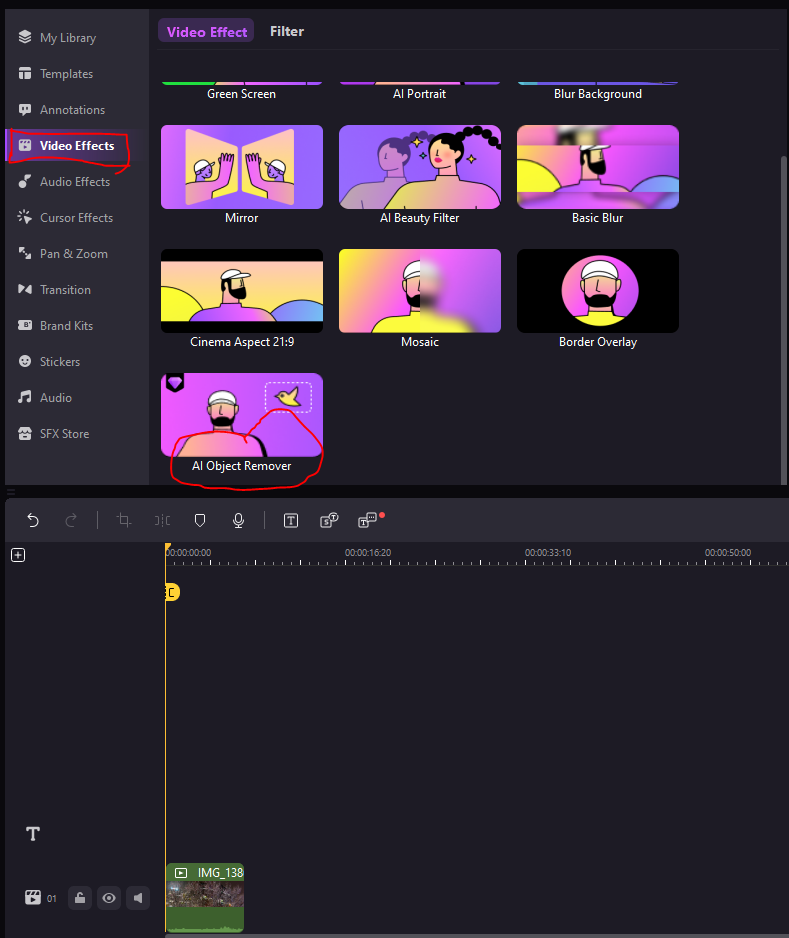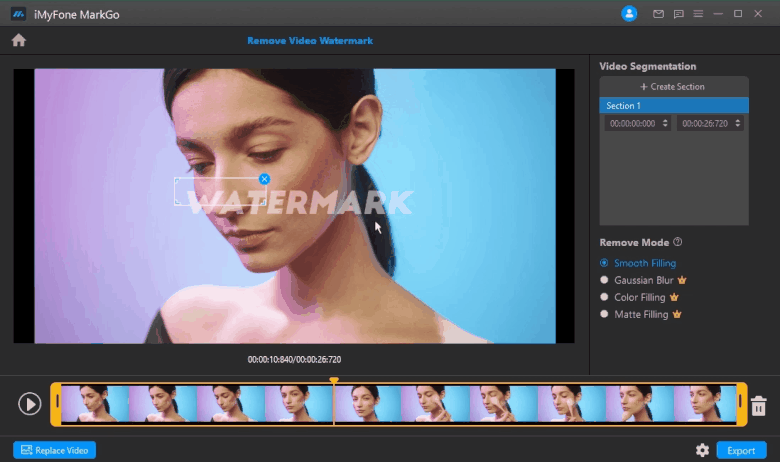Hey there! If you’re diving into video editing or just curious about how some folks remove watermarks from Shutterstock videos, you’re not alone. Watermarks are meant to protect content creators, but sometimes, people want to use videos without them—whether for personal projects, presentations, or creative edits. In 2025, the landscape has evolved with new tools and techniques promising smoother, faster results. But before jumping into the how-tos, it’s essential to understand what watermark removal really involves and why it matters. Let’s explore the basics and set the stage for a responsible approach to working with video content.
Legal Considerations and Permissions for Watermark Removal

Alright, let’s get real—watermarks are there for a reason. They protect the rights of creators and copyright owners, ensuring that their work isn’t used without permission. So, before you get excited about removing a watermark from a Shutterstock video, it’s crucial to understand the legal side of things. Removing watermarks without proper authorization can lead to serious legal trouble, including copyright infringement claims, fines, or even lawsuits.
Here’s what you need to keep in mind:
- Ownership and Licensing: Always check if you have the appropriate license or permission to use the video. Shutterstock offers various licensing options—personal, commercial, extended—that grant different rights. If you’ve purchased a license, review the terms to see if watermark removal is permitted.
- Permission from Content Creators: If you’re not the original creator, ensure you have explicit permission from the rights holder to modify or remove watermarks. This often involves a written agreement or license.
- Fair Use and Exceptions: In some cases, such as commentary, critique, or educational use, removing watermarks might fall under fair use. However, fair use is a complex legal doctrine and varies by jurisdiction. It’s best to consult with a legal expert before relying on this.
- Risks of Unauthorized Removal: Attempting to remove watermarks without permission can infringe on copyright laws, leading to takedown notices, legal action, or damage to your reputation.
In summary, always prioritize obtaining proper permissions and understanding the licensing terms associated with any video you plan to use. Respecting creators’ rights not only keeps you safe legally but also supports a fair creative ecosystem. If you’re ever in doubt, consult with a legal professional or contact Shutterstock directly to clarify what’s allowed. Remember, responsible use is key to enjoying and sharing content ethically in 2025 and beyond.
Tools and Software for Removing Watermarks from Videos

When it comes to removing watermarks from videos, especially those from Shutterstock, having the right tools can make all the difference. But it’s important to remember that watermark removal should be done ethically and legally, especially if you don’t have proper rights or permission. That said, there are several tools and software options out there that can help you clean up your videos effectively.
Popular Tools for Watermark Removal:
- Video Eraser – Available on both desktop and mobile, this tool uses intelligent algorithms to help hide or remove watermarks. It’s user-friendly and great for quick edits.
- HitPaw Watermark Remover – Known for its simplicity, this software can remove watermarks from videos and images. It offers both automatic and manual removal options.
- Adobe Premiere Pro – If you’re familiar with professional editing software, Premiere Pro has tools like masking and cloning that can help obscure watermarks effectively.
- HitFilm Express – A free video editing software that provides advanced features, including masking and clone stamping, which can help in removing watermarks when used carefully.
- Online Tools (e.g., Apowersoft Online Watermark Remover) – These are convenient if you prefer not to install software. Just upload your video, and the tool will process it, but keep in mind that results can vary based on watermark complexity.
Things to Keep in Mind:
- Always check the legality—removing watermarks from copyrighted videos without permission can lead to legal issues.
- Some tools work better with simple watermarks and may struggle with complex ones.
- Quality preservation is key; choose tools that minimize quality loss during editing.
Choosing the right software depends on your skill level, budget, and how complex the watermark is. For quick, casual edits, online tools or mobile apps may suffice. For more precise control, professional editing software like Adobe Premiere Pro or HitFilm can be more effective. Remember, the goal is to do this ethically and responsibly, respecting copyright laws at all times.
Step-by-Step Guide to Removing Shutterstock Watermarks
Now that you’re familiar with some tools, let’s walk through a simple, step-by-step process to remove Shutterstock watermarks from your videos. Keep in mind, this guide is for educational purposes and should only be used legally, such as when you have the rights to edit the video.
Step 1: Choose Your Tool
Select a software or online tool that fits your needs. For beginners, a straightforward app like HitPaw Watermark Remover or an online service might be best. If you’re experienced with editing, Adobe Premiere Pro offers more control.
Step 2: Upload Your Video
Open the chosen software or website, then upload the video containing the Shutterstock watermark. Make sure the video quality is high to prevent further quality loss during editing.
Step 3: Identify the Watermark Area
Most tools will let you select or highlight the watermark area. Some software can automatically detect watermarks, but manual selection often yields better results.
Step 4: Choose Removal Method
- Automatic Removal: The software attempts to blend the watermark area with surrounding pixels.
- Manual Cloning or Healing: You can select nearby clean parts of the video to cover the watermark, similar to retouching in photo editing.
Step 5: Process the Video
Once you’ve selected the watermark area and method, start the removal process. This might take a few minutes depending on the video’s length and complexity.
Step 6: Preview and Fine-Tune
After processing, preview the video to see how well the watermark was removed. Sometimes, you might notice artifacts or mismatched areas. Use the editing tools to refine these sections for a cleaner look.
Step 7: Export the Edited Video
When satisfied, export or save your video. Choose the appropriate format and quality settings to preserve as much detail as possible.
Final Tips:
- Always keep a backup of the original video before editing.
- Be patient—sometimes, multiple attempts are needed for seamless results.
- Respect copyright laws and only remove watermarks when legally permitted.
And that’s it! With these steps, you can effectively remove Shutterstock watermarks from videos, provided you do so responsibly. Remember, the best practice is always to obtain properly licensed videos to avoid the need for watermark removal altogether.
Tips for Ensuring Video Quality After Watermark Removal
Removing watermarks from Shutterstock videos can sometimes lead to a dip in video quality, which is the last thing you want, especially if you’re aiming for a professional look. Fortunately, there are several tips and tricks to help maintain or even enhance your video quality after watermark removal. Let’s dive into some practical advice:
- Use High-Resolution Originals: Always start with the highest quality version of the video you can access. The better the original quality, the more room you have to work with when removing watermarks without sacrificing clarity.
- Choose the Right Software: Use reputable video editing tools that specialize in detail preservation. Programs like Adobe Premiere Pro, DaVinci Resolve, or dedicated watermark removal tools with AI capabilities can help minimize quality loss during editing.
- Apply Gentle Compression: When exporting your video, avoid aggressive compression settings. Opt for high bitrate exports and codecs like H.264 or H.265 that preserve detail and color fidelity.
- Sharpen the Video if Needed: After watermark removal, some videos might appear a little soft. Use sharpening filters cautiously to enhance details without introducing noise or artifacts.
- Color Correction and Grading: Sometimes, removing watermarks can affect the color balance. Use color correction tools to restore vibrancy and ensure your video looks natural and appealing.
- Preview Before Final Export: Always review your video at full resolution before finalizing. Check for any artifacts, blurriness, or inconsistencies that might have been introduced during removal.
Remember, patience and precision are key. Rushing through the process can lead to poor quality results. Taking these careful steps will help you produce a clean, professional-looking video that’s ready to impress your audience.
Alternatives to Watermark Removal for Using Shutterstock Videos Legally
If removing watermarks isn’t your thing—or if you want to stay on the right side of copyright laws—there are plenty of legitimate ways to use Shutterstock videos without having to do any watermark removal. Here are some options to consider:
1. Purchase a Proper License
The simplest and most straightforward method is to buy the appropriate license for the video you want. Shutterstock offers various licensing options depending on how you plan to use the footage—whether for personal projects, commercial advertising, or social media. Once purchased, you get access to the video in full quality, watermark-free, and legally safe to use.
2. Subscribe to a Shutterstock Plan
Many users opt for a subscription plan, which provides a certain number of downloads per month. This is cost-effective if you need multiple videos regularly. With a subscription, you can download high-quality, watermark-free clips without any legal concerns.
3. Use Shutterstock’s Embeddable Videos
Some Shutterstock videos come with an embeddable option, allowing you to share videos directly on your website or social media without downloading. These are typically free to embed with proper attribution, making it a legal and hassle-free alternative.
4. Explore Free Stock Video Resources
If licensing costs are a concern, consider free stock video websites like Pexels, Pixabay, or Unsplash. They offer high-quality videos that are free to use for personal and commercial projects without watermark removal or licensing worries.
5. Contact Shutterstock for Custom Licensing
If you have specific needs or want exclusive rights, reaching out directly to Shutterstock for a custom license can be a good option. This way, you get legal access tailored to your project, avoiding any potential legal issues related to watermark removal.
In summary, while watermark removal might seem like an easy fix, it’s always best to respect copyright laws and licensing agreements. Purchasing proper licenses or using legitimate sources ensures your project remains ethical, legal, and high quality in the long run.
Conclusion and Best Practices for Video Editing
Removing watermarks from Shutterstock videos can be tempting for some, but it’s essential to respect copyright laws and licensing agreements. Unauthorized removal of watermarks may lead to legal repercussions and ethical concerns. Instead, consider obtaining proper licenses or purchasing the videos legally to ensure your projects remain compliant and professional.
When working with video editing tools, here are some best practices to keep in mind:
- Use legitimate sources: Always acquire videos through official channels to avoid the need for watermark removal.
- Employ professional editing software: Programs like Adobe Premiere Pro, Final Cut Pro, or Davinci Resolve offer advanced features for editing and watermark removal.
- Apply non-destructive editing techniques: Work on copies of your footage to preserve the original files and maintain flexibility.
- Utilize masking and cropping: These methods can help eliminate watermarks without affecting the main content, but be cautious of distortion or cropping out important parts.
- Explore AI-powered tools responsibly: Some AI-based applications can assist with watermark removal, but ensure they are used ethically and legally.
In summary, the most sustainable and ethical approach is to prevent watermark issues by licensing videos appropriately. When editing, prioritize quality, legality, and respect for content creators to produce professional and compliant videos in 2025 and beyond.


